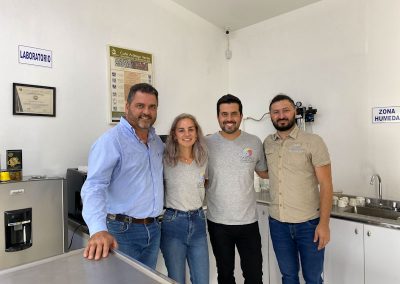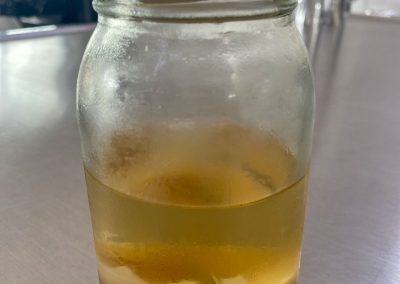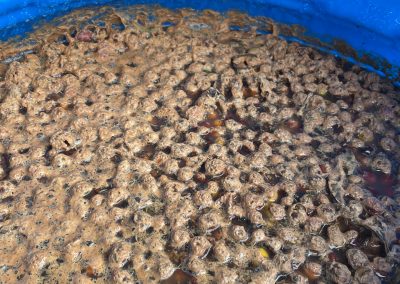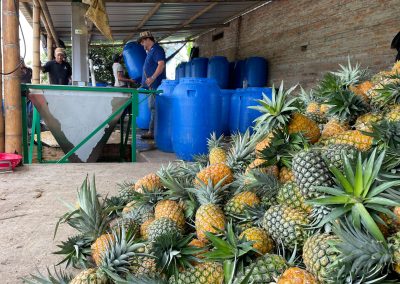Castillo-Caturra
GT Culturing
Castillo-Caturra GT Culturing
– Data Sheet
Region: Risaralda – Colombia
Farm: Finca Milan
Altitude: 1.400 m.a.s.l
Varieties: Caturra and Castillo
Drying: Solar-Drying
Processing: Washed
Fermentation: Culturing
Notes: Lemongrass, Orange Blossom, Orange, Sugar Cane, Tea-like. Delicate and Structured
SCA Score: 87
Farm Info
Finca Milan, located in Pereira, Risaralda, is owned by Julio Cesar Madrid, a third-generation coffee producer. The farm has been in the Madrid family for 40 years and now spans 50 hectares. Originally focused on traditional coffee, Finca Milan transitioned to specialty coffee production, blending traditional methods passed down from Rafael Madrid with innovative techniques introduced by Julio.
The farm specializes in unique processing methods, including Natural, Washed, Honey, and Culturing.
Culturing Fermentation Technique
Culturing involves using starter cultures rich in microorganisms to ferment coffee. At Finca Milan, starter cultures are created using locally sourced fruits (pineapple, mango, passion fruit) and aromatic plants. These cultures, combined with native yeasts and bacteria from the coffee’s environment, drive fermentation.
Coffee undergoes spontaneous fermentation in its natural setting, developing unique bacterial loads. The process involves carefully mixing coffee with fruit and starter cultures under controlled conditions—restricted oxygen, monitored pH, and temperature—resulting in a mixed fermentation that enhances flavour complexity.
“GT” refers to the specific starter culture used in this process.




